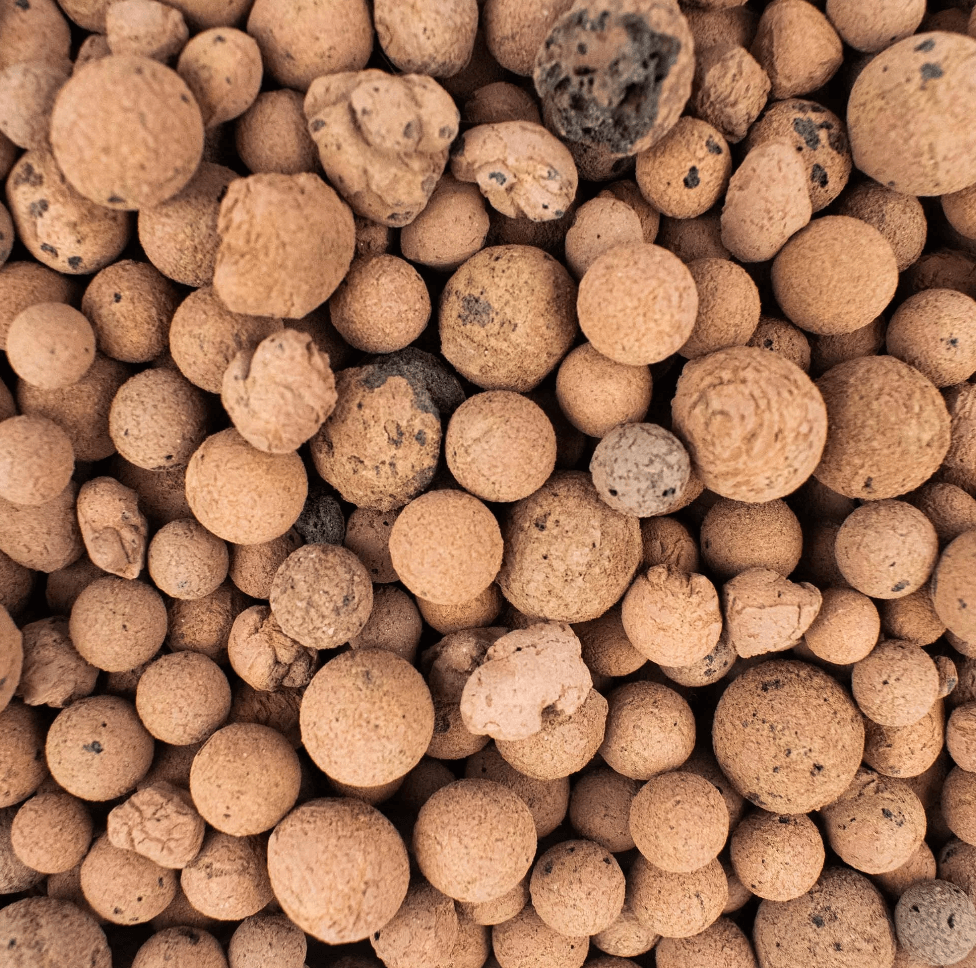What are LECA Clay Pebbles & How To use Them
What is LECA?
LECA, which stands for "lightweight expanded clay aggregate," is a type of horticultural growing medium made from small balls of fired clay. It is often used in hydroponic systems and container gardening as a way to support plants and help them get the nutrients they need to grow. LECA has several benefits for plants, including its ability to retain water and nutrients, provide good drainage, and maintain a stable temperature. It is also relatively lightweight and easy to work with, making it a popular choice for horticulturists and home gardeners alike.
Benefits of Using LECA
Here are some benefits of using LECA for your plants:
Water retention: LECA clay pebbles can absorb and retain water, making them a useful growing medium for plants that need consistent moisture.
Nutrient delivery: The porous nature of LECA clay pebbles allows them to hold onto nutrients, which can then be slowly released to the plants as needed.
Drainage: LECA clay pebbles provide good drainage, which is important for preventing root rot and other problems caused by excess moisture.
Aeration: The spaces between the LECA clay pebbles allow for air circulation, which is essential for healthy plant growth.
Lightweight and easy to work with: LECA clay pebbles are lightweight and easy to handle, making them convenient for use in hydroponic systems and other container-based growing setups.
Houseplants That Love LECA
Many different types of houseplants can grow successfully in LECA clay pebbles. Here are a few examples:
African violets
Begonias
Cacti and succulents
Ficus
Philodendron
Pothos
Snake plants
Spider plants
Prayer plants
ZZ plants
Here are a few ways to use LECA clay pebbles for growing plants:
Hydroponic systems: LECA clay pebbles can be used as a growing medium in hydroponic systems, which use nutrient-rich water instead of soil to grow plants.
Container gardening: LECA clay pebbles can be used in container gardens as a way to support and nourish plants. They can be mixed with other growing media or used on their own.
Top dressing: LECA clay pebbles can be used as a top dressing for potted plants to help retain moisture and provide a decorative finish.
Propagation: LECA clay pebbles can be used to support cuttings and seedlings as they grow and establish roots.
Green roofs: LECA clay pebbles can be used in the construction of green roofs, which are covered in plants and vegetation. The clay pebbles provide a lightweight and drainable growing medium.
Frequently Asked Question’s
-
LECA clay pebbles are generally considered safe for pets. However, as with any household item, it is always a good idea to keep pets away from LECA clay pebbles to prevent them from ingesting them. If a pet ingests a large amount of LECA clay pebbles, it could potentially cause an intestinal blockage, which would require medical attention. To prevent this from happening, it is important to keep LECA clay pebbles out of reach of pets, especially if you are using them in a container garden or other setup that is easily accessible to animals.
-
LECA is made from small balls of clay that are fired in a kiln at a high temperature. As the clay balls are heated, they expand and become porous, creating a material that is lightweight and has a high surface area. The process of making LECA begins by mining clay from the earth and then crushing it into small pieces. The clay is then formed into balls and dried, after which it is placed in a kiln and fired at a temperature of around 1100-1200 degrees Celsius. As the clay balls are heated, they expand and become porous, creating LECA. The finished product is a lightweight, porous material.
-
LECA is considered to be an environmentally friendly growing medium due to its ability to support plant growth without the use of soil. LECA is also a renewable resource, as it is made from clay, a naturally occurring material that can be replenished over time.
-
Here at Growthopedia or at any local garden center and home improvement stores.


